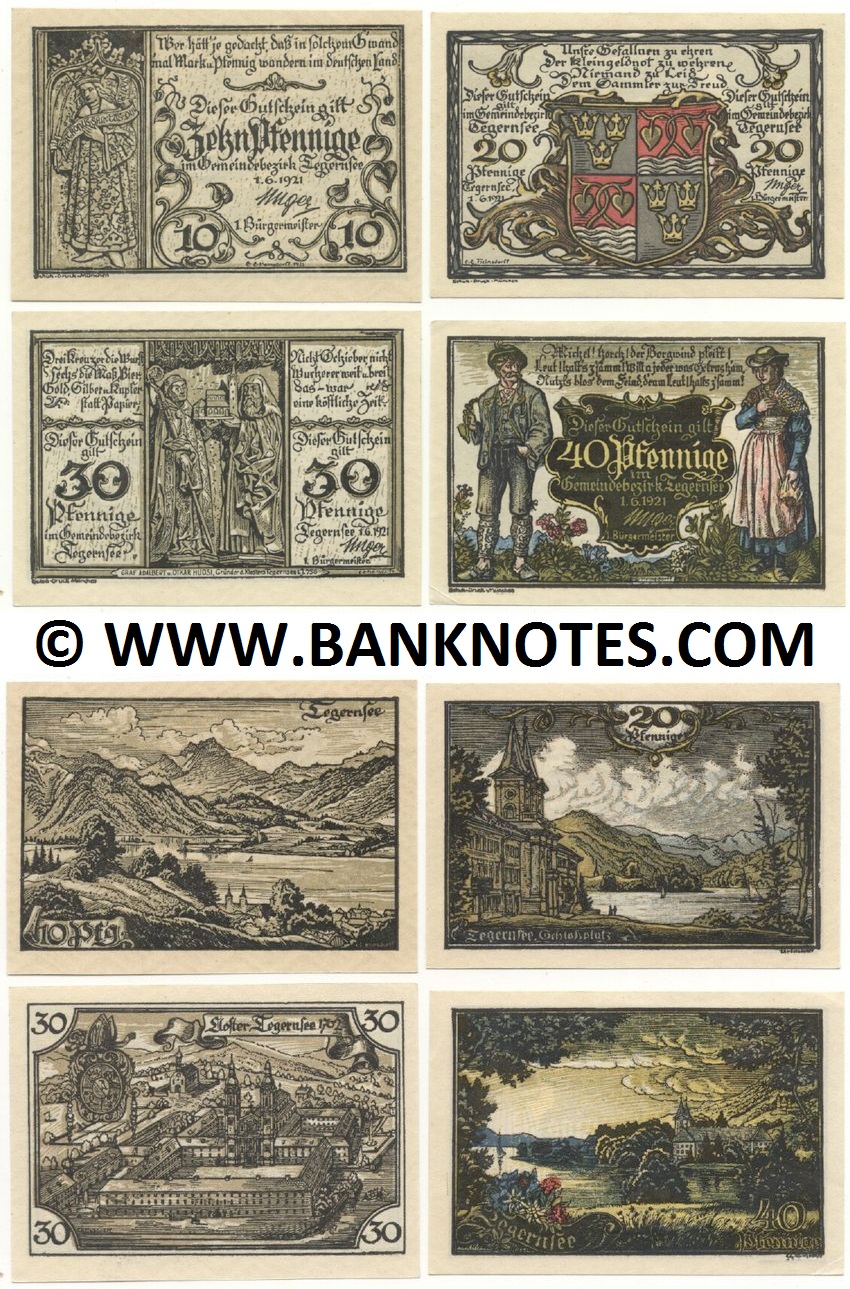
Town of Tegernsee (Bayern): Notgeld set of 4: 10, 20, 30, 40 Pfennig, dated 1st of June 1921 (Catalogue Nº L1281), (Town views and historic figures) (Serial Nos: n/a) UNC
Printer (Druckerei): Schuh-Druck, München
Approximate dimensions: 92 x 65 mm
Signature title: Bürgermeister
Designer (Entwerfer): E.E. Heinsdorff
Watermark: Yes
Diefer Gutschein gilt 10 / 20 / 30 / 40 Pfennige im Gemeindebezirk Tegernsee 1.6.1921
Tegernsee, Schlossplatz (20 Pfennige reverse)
Graf Adalbert u. Otkar Huosi, Gründer d. Klosters (founders of the monastery), Tegernsee 1.3.756
Category: Notgeld - Emergency Money - Local Government Currency
LARGER SAMPLE PHOTO: CLICK HERE
Catalogue Number: Lindman 1281
Notgeld (German for "emergency money" or "necessity money") refers to money issued by an institution in a time of economic or political crisis. The issuing institution is usually one without official sanction from the central government. This occurs usually when sufficient state-produced money is not available from the central bank. Most notably, notgeld generally refers to money produced in Germany and Austria during World War I and the Interbellum. Issuing institutions could be a town's savings banks, municipality and private or state-owned firms.
Grade/condition: Uncirculated (UNC) (new, unused, mint)
Printer (Druckerei): Schuh-Druck, München
Approximate dimensions: 92 x 65 mm
Signature title: Bürgermeister
Designer (Entwerfer): E.E. Heinsdorff
Watermark: Yes
Diefer Gutschein gilt 10 / 20 / 30 / 40 Pfennige im Gemeindebezirk Tegernsee 1.6.1921
Tegernsee, Schlossplatz (20 Pfennige reverse)
Graf Adalbert u. Otkar Huosi, Gründer d. Klosters (founders of the monastery), Tegernsee 1.3.756
Category: Notgeld - Emergency Money - Local Government Currency
LARGER SAMPLE PHOTO: CLICK HERE
Catalogue Number: Lindman 1281
Notgeld (German for "emergency money" or "necessity money") refers to money issued by an institution in a time of economic or political crisis. The issuing institution is usually one without official sanction from the central government. This occurs usually when sufficient state-produced money is not available from the central bank. Most notably, notgeld generally refers to money produced in Germany and Austria during World War I and the Interbellum. Issuing institutions could be a town's savings banks, municipality and private or state-owned firms.
Grade/condition: Uncirculated (UNC) (new, unused, mint)




